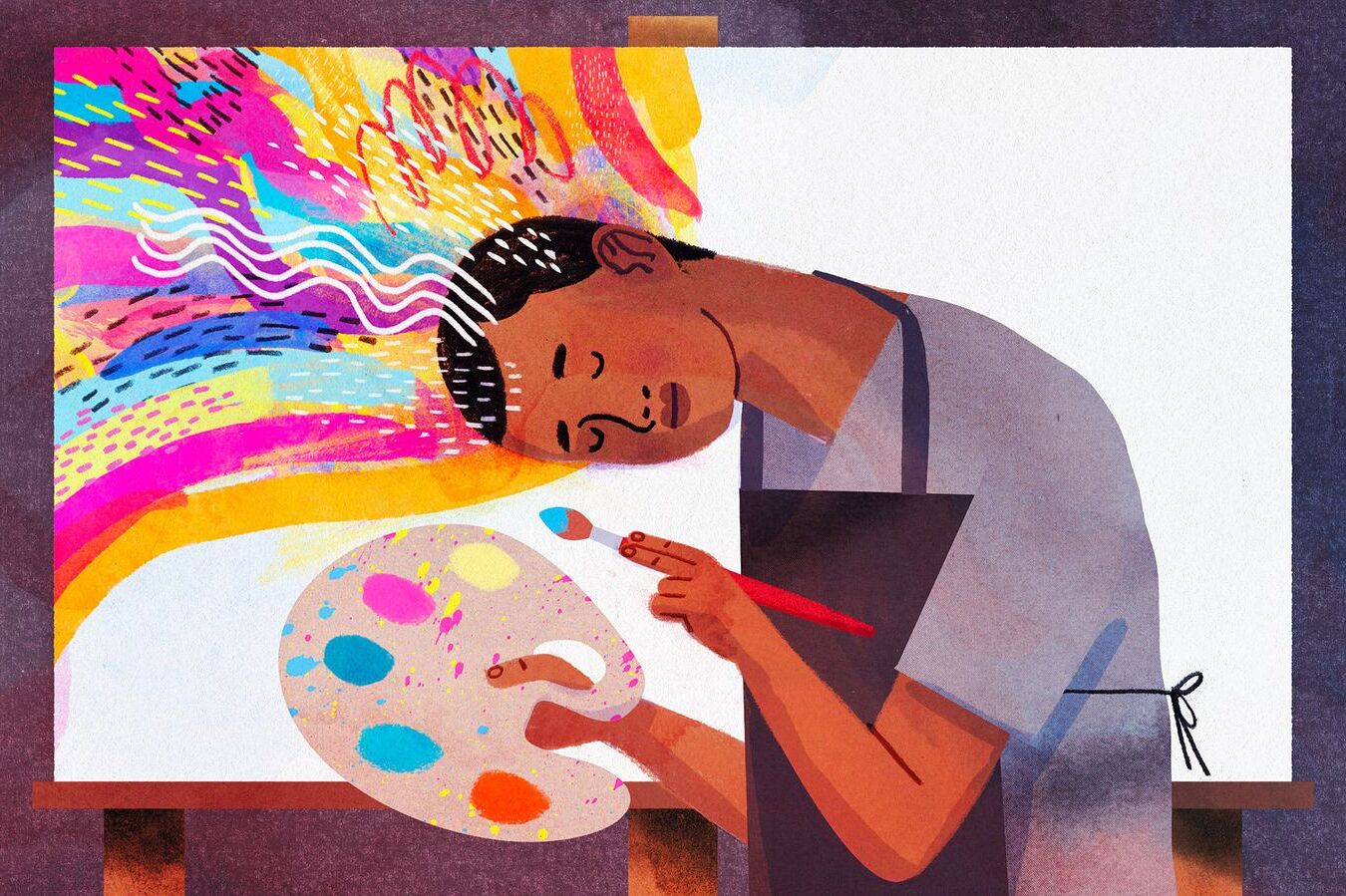
Art has always been a significant part of human history, reflecting cultures, beliefs, and emotions. From ancient cave paintings to modern digital creations, art tells stories and connects us across time and space. But did you know that the Mona Lisa wasn't always famous? Or that Vincent van Gogh only sold one painting during his lifetime? These fascinating tidbits make the world of art even more intriguing. Whether you're an art enthusiast or just curious, these 30 facts about art will surprise and enlighten you. Art isn't just about pretty pictures; it's a window into human creativity and history. Ready to learn more? Let's dive in!
Key Takeaways:
- Art has been a powerful force throughout history, connecting people across time and cultures. From the Mona Lisa to modern digital art, it continues to inspire and challenge societal norms.
- Technology has revolutionized the art world, allowing for new forms of creativity and immersive experiences. From 3D printing to virtual reality, the possibilities for artistic expression are endless.
The Power of Art
Art has been a fundamental part of human culture for thousands of years. It transcends language, time, and geography, connecting people through shared experiences and emotions. Here are some fascinating facts about the world of art.
-
The Mona Lisa by Leonardo da Vinci is one of the most famous paintings in the world. It is known for its mysterious smile and has been on display at the Louvre Museum in Paris since 1797.
-
Vincent van Gogh only sold one painting during his lifetime, "The Red Vineyard." Despite his lack of commercial success, he created over 2,100 artworks, including about 860 oil paintings.
-
The Starry Night by Vincent van Gogh was painted while he was in a mental asylum in Saint-Rémy-de-Provence, France. It depicts the view from his room just before sunrise.
-
Pablo Picasso could draw before he could walk. His first word was "pencil," and he completed his first painting, "Le Picador," at the age of nine.
-
The Sistine Chapel ceiling was painted by Michelangelo between 1508 and 1512. It features over 300 figures and covers an area of about 12,000 square feet.
Art in History
Art has played a significant role in documenting and shaping history. It reflects the values, beliefs, and events of different eras.
-
The Lascaux Caves in France contain some of the oldest known art, dating back over 17,000 years. These prehistoric paintings depict large animals and human figures.
-
Ancient Egyptians used art to honor their gods and pharaohs. They created elaborate tomb paintings and sculptures to ensure a safe journey to the afterlife.
-
The Terracotta Army in China consists of over 8,000 life-sized soldiers, horses, and chariots. It was created to protect Emperor Qin Shi Huang in the afterlife.
-
Renaissance art marked a period of great cultural change and achievement in Europe. Artists like Leonardo da Vinci, Michelangelo, and Raphael made significant contributions during this time.
-
The Impressionist movement began in the late 19th century. Artists like Claude Monet and Edgar Degas focused on capturing light and movement in their work.
Modern and Contemporary Art
Modern and contemporary art continue to push boundaries and challenge traditional notions of art.
-
Abstract art emerged in the early 20th century. Artists like Wassily Kandinsky and Piet Mondrian used shapes, colors, and lines to create non-representational works.
-
Pop Art became popular in the 1950s and 1960s. Artists like Andy Warhol and Roy Lichtenstein used imagery from popular culture and mass media in their work.
-
Street art has gained recognition as a legitimate form of art. Artists like Banksy use public spaces to create thought-provoking and often controversial pieces.
-
The Guggenheim Museum in Bilbao, Spain, is an architectural masterpiece designed by Frank Gehry. It is known for its unique, flowing design and houses a vast collection of modern art.
-
Digital art has become increasingly popular with the rise of technology. Artists use software and digital tools to create innovative and interactive works.
Art and Culture
Art is deeply intertwined with culture, influencing and reflecting societal norms and values.
-
Japanese ukiyo-e prints, like those by Hokusai, depict scenes from everyday life, nature, and mythology. These prints have had a significant impact on Western art.
-
African art is known for its rich diversity and cultural significance. Traditional African masks and sculptures often represent spiritual beliefs and social status.
-
Indigenous art in Australia, known as Aboriginal art, dates back over 60,000 years. It includes rock paintings, bark paintings, and dot paintings that tell stories of the Dreamtime.
-
Mexican muralism emerged in the early 20th century. Artists like Diego Rivera and José Clemente Orozco created large-scale murals that depicted social and political themes.
-
Native American art encompasses a wide range of styles and mediums, from pottery and weaving to beadwork and painting. It often reflects the spiritual and cultural traditions of different tribes.
Art and Technology
Technology has revolutionized the way art is created, experienced, and shared.
-
3D printing allows artists to create intricate sculptures and designs that would be impossible to make by hand. This technology has opened up new possibilities for creativity.
-
Virtual reality (VR) art immerses viewers in a digital environment. Artists can create interactive experiences that transport people to different worlds.
-
Augmented reality (AR) art overlays digital elements onto the real world. This technology can be used to enhance traditional artworks or create entirely new experiences.
-
Artificial intelligence (AI) is being used to create art. AI algorithms can analyze existing artworks and generate new pieces based on patterns and styles.
-
NFTs (non-fungible tokens) have become a popular way to buy and sell digital art. These unique digital assets are stored on a blockchain and can represent ownership of a specific piece of art.
Art and Society
Art has the power to inspire, provoke, and bring about social change.
-
Guernica by Pablo Picasso is a powerful anti-war painting. It depicts the horrors of the bombing of Guernica during the Spanish Civil War.
-
The Feminist art movement emerged in the 1970s. Artists like Judy Chicago and Miriam Schapiro challenged traditional gender roles and highlighted women's experiences.
-
Environmental art raises awareness about ecological issues. Artists like Andy Goldsworthy create works that interact with the natural environment.
-
Political art often addresses social and political issues. Artists like Ai Weiwei use their work to comment on human rights and government policies.
-
Community art projects bring people together to create collaborative works. These projects can foster a sense of belonging and address local issues.
Art's Endless Wonders
Art's impact on our lives is undeniable. From ancient cave paintings to modern digital creations, it shapes cultures, tells stories, and evokes emotions. Whether you're an artist or an admirer, there's always something new to learn and appreciate.
Art isn't just about beauty; it's a powerful tool for communication and expression. It can challenge perspectives, inspire change, and bring people together. Every piece of art, no matter how small, contributes to the rich tapestry of human experience.
So next time you visit a gallery, pick up a paintbrush, or even doodle in a notebook, remember the incredible history and significance behind every stroke. Art is all around us, waiting to be explored and celebrated. Dive in, let your creativity flow, and see where it takes you.
Frequently Asked Questions
Was this page helpful?
Our commitment to delivering trustworthy and engaging content is at the heart of what we do. Each fact on our site is contributed by real users like you, bringing a wealth of diverse insights and information. To ensure the highest standards of accuracy and reliability, our dedicated editors meticulously review each submission. This process guarantees that the facts we share are not only fascinating but also credible. Trust in our commitment to quality and authenticity as you explore and learn with us.


